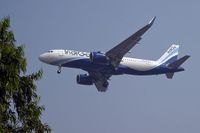After more than five years of suspended travel and frosty diplomatic exchanges, India and China are set to resume direct flights between their major cities, signaling a notable thaw in relations between the two Asian giants. The long-awaited move, announced by both nations’ officials on October 2, 2025, comes as both countries look to rebuild ties and navigate global economic uncertainties, particularly in the face of shifting trade dynamics and external pressures.
Direct flights between India and China were first halted in early 2020, as the world grappled with the onset of the Covid-19 pandemic. But the pandemic was only the beginning of a far deeper freeze. Later that year, relations between New Delhi and Beijing deteriorated sharply following deadly clashes along their disputed Himalayan border. According to multiple sources, including Bloomberg News and The Independent, the violence resulted in the deaths of 20 Indian and four Chinese soldiers—marking the worst conflict between the two countries in decades. In the aftermath, not only did high-level political engagement stall, but direct air links remained suspended, forcing travelers to reroute through hubs like Hong Kong or Singapore.
Now, with diplomatic overtures under way and both countries seeking to boost trade and people-to-people contact, the skies are opening up once more. India’s largest carrier, IndiGo, was the first to announce its return: beginning October 26, 2025, it will offer daily flights from Kolkata to Guangzhou, operated by its fleet of Airbus A320neo aircraft. Pieter Elbers, IndiGo’s CEO, welcomed the development, stating, “With this very important step, we are looking at introducing more direct flights into China.” He added that the airline’s prior experience operating in China before the pandemic would help ensure a smooth resumption of services.
The resumption of flights is not just about convenience or commerce—it’s a signal that both governments are serious about moving past the bitterness of recent years. According to a statement from India’s Ministry of External Affairs, the return of direct air service “will further facilitate people-to-people contact between India and China, contributing towards the gradual normalisation of bilateral exchanges.” The ministry emphasized that flights would resume “subject to commercial decisions by designated carriers from the two countries” and the fulfillment of operational criteria, in line with the Northern winter season schedule that begins in late October.
Other airlines are also preparing to re-enter the market. Air India, the country’s flag carrier, is reportedly working on plans to launch flights from New Delhi to Shanghai using Boeing 787 Dreamliner aircraft, according to sources familiar with the matter. Although rollout dates for Air India’s new routes have not yet been finalized, the move reflects a broader push to restore the rich tapestry of air connections that once linked Indian and Chinese cities. Before the pandemic, IndiGo operated flights to both Guangzhou and Chengdu, while Air India served Shanghai. On the Chinese side, the state-owned “Big Three”—Air China, China Eastern Airlines, and China Southern Airlines—flew to Delhi, Mumbai, and Kolkata.
The diplomatic backdrop to this aviation reboot is just as important as the commercial one. The breakthrough follows Indian Prime Minister Narendra Modi’s visit to China in late August 2025—his first trip there in seven years. The occasion, a regional security forum, provided an opportunity for Modi and Chinese President Xi Jinping to signal a willingness to “normalize” ties and resume dialogue. As reported by Semafor, the timing of Modi’s visit was especially notable, coming on the heels of U.S. President Donald Trump’s imposition of 50% tariffs on Indian goods. The tariffs, described by an expert as “one of the biggest shocks that India has ever got,” have prompted New Delhi to seek new partners and re-evaluate its global alliances.
In August, following talks between their foreign ministers in New Delhi, India and China agreed to facilitate bilateral trade and investments—a crucial step as both nations contend with rising global trade uncertainties. The resumption of direct flights is widely seen as a practical extension of this diplomatic rapprochement. Ajay Prakash, chief executive at Nomad Travels and former president of the Travel Agents Federation of India, told Bloomberg News, “Resumption of flights will lead to more people-to-people contact. It will also come as a big respite for medium and small sized companies that do business with China.” Prakash added that for the benefits to be fully realized, the improved air links should be followed up with streamlined visa rules and efforts to attract Chinese tourists to India.
Indeed, the reopening of the skies is already having ripple effects. IndiGo’s shares rose as much as 1.5% during trading in Mumbai on October 3, 2025, before giving up some of those gains—a sign that investors see opportunity in renewed connectivity. Meanwhile, earlier this year, India began allowing tourist visas for Chinese nationals after years of curbs, further easing the path toward increased travel and exchange.
The process of restoring flights has not been without its delays. India and China had first agreed in January 2025 to resume direct air services, and again in June, but progress was slow, hampered by lingering mistrust and the logistical complexities of reestablishing international routes. For months, travelers between the two countries had to make do with circuitous journeys, often involving lengthy layovers in third countries. Now, with the first direct flights set to take off in late October, the sense of anticipation is palpable on both sides of the border.
It’s worth noting just how significant the India-China air corridor is. Before the pandemic, thousands of business travelers, students, and tourists moved between the two nations each week, helping to sustain a complex web of economic and cultural ties. The restoration of direct flights is expected to provide much-needed relief to small and medium-sized enterprises, many of which rely on swift, reliable travel for supply chain management and client relations. As Ajay Prakash pointed out, “This needs to be followed up with improved visa rules to ensure ease of travel and India should also look at attracting Chinese tourists.”
For now, the focus remains on the practicalities: getting planes back in the air, restoring lost connections, and rebuilding trust. But the symbolism is hard to miss. By opening their skies once more, India and China are taking a tangible step toward repairing a relationship that, just a few years ago, seemed dangerously close to unraveling. Whether this new era of engagement will last remains to be seen, but for travelers, businesses, and diplomats alike, October 2025 marks a hopeful new chapter in a complex and consequential partnership.


